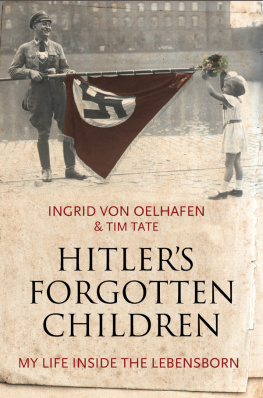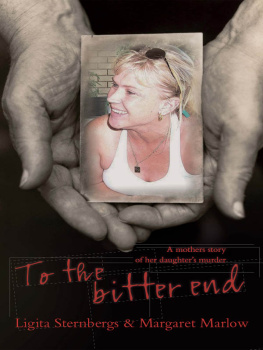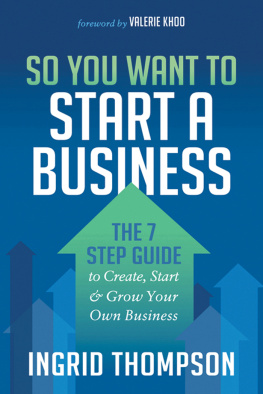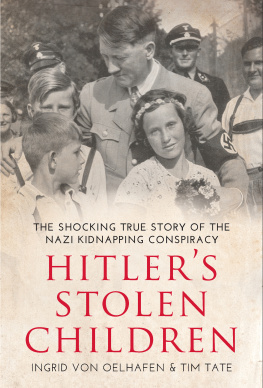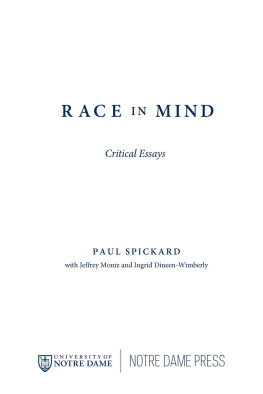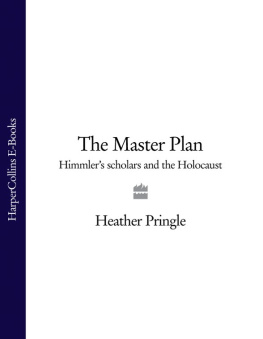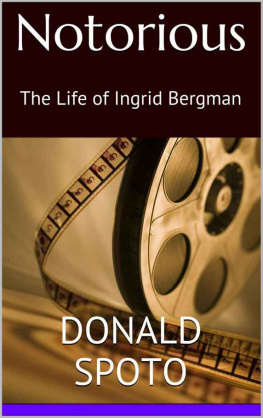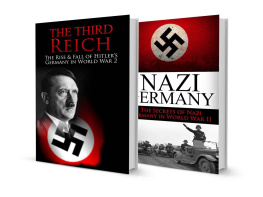HITLERS
FORGOTTEN
CHILDREN

This book is dedicated to all the victims of Nazi Germany
men, women and, above all, children and to those throughout
the world today who suffer from the persisting evil which
teaches that one race, creed or colour is superior to another.
CONTENTS
PREFACE
B lood runs through this story. The blood of young men spilled on the battlefields of war; the blood of civilians that ran through the gutters of cities, towns and villages across Europe; the blood of millions destroyed in the pogroms and death camps of the Holocaust.
But blood, too, as an idea: the Nazi belief absurd as this seems today in good blood, precious Ichor to be sought out, preserved and expanded. And with it, the inevitable counterpart: bad blood, to be ruthlessly eradicated.
I was born in 1941 in the depths of the Second World War. I grew up in its wake, and under the shadow of its brutal progeny, the Cold War.
My history is the history of millions of ordinary German men and women like me. We are the victims of Hitlers obsession with blood, as well as the beneficiaries of the post-war economic miracle that transformed our devastated and pariah nation into the powerhouse of modern Europe. Our story is that of a generation raised in the shadow of infamy, but which found a way to struggle towards honesty and decency.
But my own story is also that of a much more secret past, still cloaked in silence and shrouded in shame.
I am a child of Lebensborn.
Lebensborn is an ancient German word meaning fountain of life, twisted and distorted by the word-smelters of National Socialism. What did it mean in the madness of Nazism? What does it mean today? My search for the answers to uncover my own story has taken me on a long and painful road: a physical journey that has led me across the map of modern Europe. It has been an historical expedition, too: an often uncomfortable return to the Germany of more than seventy years ago, and into the troubled stories of those countries overrun by Hitlers armies.
The journey has also forced me to make a psychological voyage into everything I have known and grown up with: a fundamental questioning of who I am, and what it means to be German. I will not pretend that this is a simple story: it will not always be easy to read. But neither has it been easy to live.
I am not, by nature, overtly emotional. The expression of emotion, such a commonplace thing in twenty-first-century society, does not come easily to me. I have spent my life attempting to suppress my inner self, to subordinate my feelings to the circumstances in which I have grown up, as well as to the needs of others.
But this is a story which, I believe, needs to be heard. More, much more, it needs to be understood. It is not unique, in that there are others who have endured much of what has shaped my life. But while I share a common thread with thousands of others who passed through the vile experiment of Lebensborn, to the best of my knowledge no one else shares the particular twists of fate, history and geography that have defined my seventy-four years on earth.
Lebensborn. The word runs through my life like the blood coursing through my body. To see it, to understand it, demands much more than a superficial examination. The search for the roots of this story requires a deep and intrusive investigation of the most hidden places.
We must start in a town and a country that no longer exist.
ONE | AUGUST 1942
Men must be shot, the women locked up and transported to concentration camps, and the children must be torn from their motherland and instead accommodated in the territories of the old Reich.
REICHSFHRER-SS HEINRICH HIMMLER, 25 JUNE 1942
Cilli, German-occupied Yugoslavia, 37 August 1942
The schoolyard was crowded. Hundreds of women young and old clutched the hands of their children and found what space they could in the packed courtyard. Nearby, Wehrmacht soldiers, rifles slung over their shoulders, looked on as the families slowly drifted in from towns and villages across the area.
These women had been summoned by their new German masters, ordered to bring their children to the school for medical tests. Upon arrival they were arrested and told to wait. Otto Lurker, commander of the police and security services for the region, watched relaxed and impassive his hands resting comfortably in his pockets as the yard filled with families. Once, Lurker had been Hitlers gaoler: now he was the Fhrers leading henchman in Lower Styria. He held the rank of SS-Standartenfhrer the paramilitary equivalent of a full colonel in the army but that summers morning he was casually dressed in a two-piece civilian suit.
Yugoslavia had been under Nazi rule for sixteen months. In March 1941, with the surrounding countries of Hungary, Romania and Bulgaria having recently joined the Reichs alliance of Balkan nations, Hitler put pressure on the kingdoms ruler, the Regent Prince Paul, to fall into line. He and his cabinet bowed to the inevitable, formally tying Yugoslavia to the axis powers, but the Serb-dominated army launched a coup dtat, replacing Paul with his seventeen-year-old second cousin, Prince Peter.
News of the revolt reached Berlin on 27 March. Hitler took the coup as a personal insult and issued Directive 25, formally designating the country an enemy of the Reich. The Fhrer ordered his armies to destroy Yugoslavia militarily and as a state. A week later, the Luftwaffe began a devastating bombing campaign while divisions of Wehrmacht infantry and tanks of the Panzer Corps swept through towns and villages. The Royal Yugoslavian Army was no match for Germanys Blitzkrieg troops: on 17 April the country surrendered.
The occupying troops immediately set about fulfilling Hitlers instruction to dismantle all vestiges of the state. Some 65,000 people primarily intellectuals and nationalists were exiled, imprisoned or murdered, their homes and property handed over to their new German masters. The Slovene language was prohibited.
But for the rest of 1941 and throughout the first half of 1942, partisan groups, led by the communist Josip Broz Tito, fought a determined campaign of resistance. Germany retaliated with a brutal crackdown: the Gestapo swooped on fighters and civilians alike, deporting thousands to concentration camps across the Reich. Others were executed as a warning against resistance. In the nine months following September 1941, 374 men and women were lined up against the walls of the prison yard at Cilli and summarily shot. Photographers recorded the murders for the purposes of both posterity and propaganda.
On 25 June 1942, Heinrich Himmler the second most powerful and feared man in Nazi Germany issued orders to his secret police and SS officers for the elimination of partisan resistance.
This campaign possesses every required element to make harmless the population which has supported the bandits and provided them with human resources, weapons and shelter. Men from such families, and often even their relatives, must be shot, the women locked up and transported to concentration camps, and the children must be torn from their motherland and instead accommodated in the territories of the old Reich. I expect to be provided with a special report on the number of children and their racial values.
Against this bloody backdrop, 1,262 people many the surviving relatives of those executed as an example to the rest of the population assembled in the schoolyard that August morning to await their fate.
Among them was a family from the nearby village of Sauerbrunn. Johann Matko came from a family of known partisans: his brother, Ignaz, had been one of those lined up and shot against the wall of Cilli prison in July. Johann had been dragged off to Mauthausen concentration camp. After seven months in the camp he was allowed to return home to his wife, Helena, and their three children: eight-year-old Tanja, her brother Ludvig then six and nine-month-old baby Erika.
Next page
